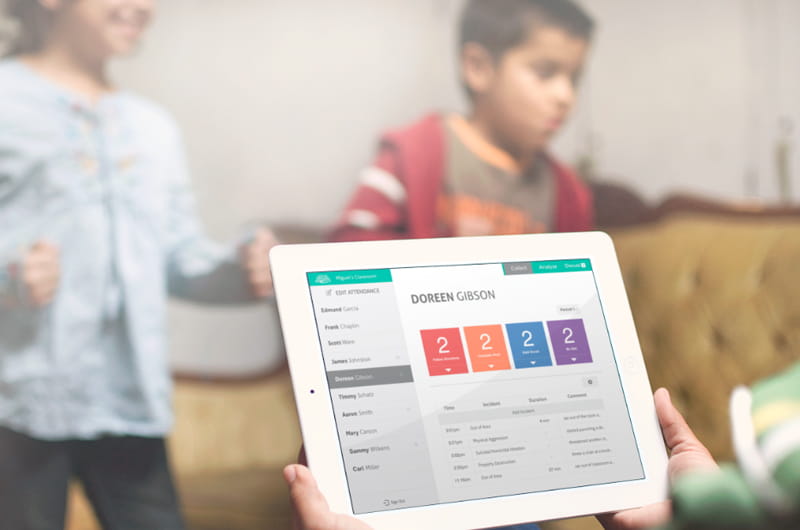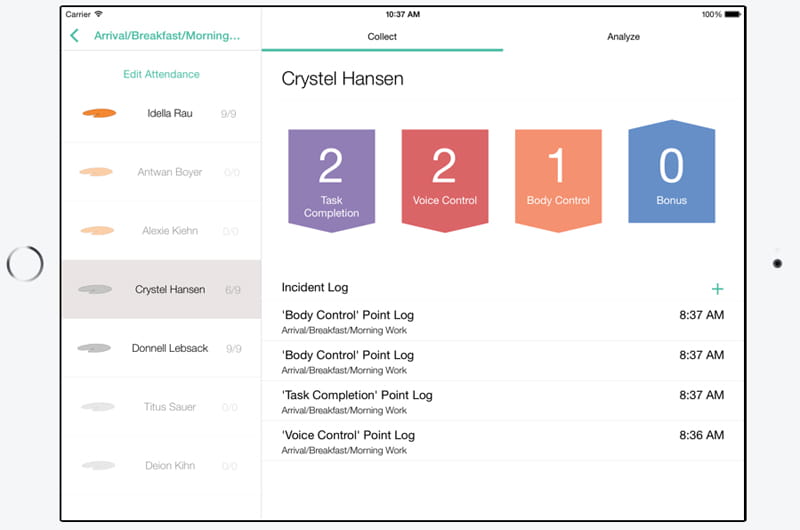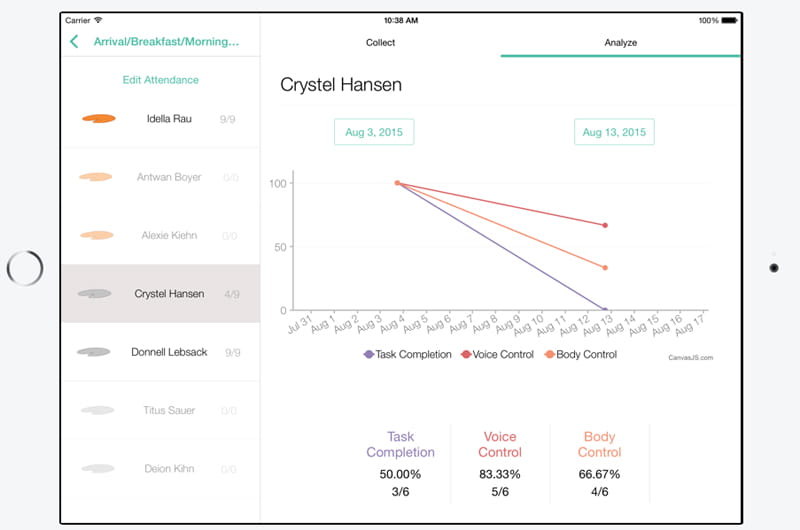Drexel's Lilypad Makes It Easier For Teachers To Take Notes Too

- Drexel Selects New, World-Class Life Sciences Building at 3201 Cuthbert Street for Medical Research Operations
- Breakthrough on Gene Therapy for Hereditary Spastic Paraplegia
- Drexel Environmental Collaboratory Releases Cross-Sector Findings on Severe Weather Recovery Challenges
- Drexel Launches the Manuel Stamatakis Center for Alternative Investments at the LeBow College of Business

Lilypad reduces information gathering amidst a hectic classroom of students to just a few taps on a tablet.
Students aren’t the only ones taking notes in the classroom these days. Keeping track of students in a bustling environment is one of the many challenges faced by teachers on a daily basis. But for behavioral specialists—the aides, psychologists and caseworkers who are also part of the classroom team— “keeping tabs” poses a different set of challenges. These professionals are charged with gathering very specific data on student behaviors while also working with students to reach therapy goals. Researchers from Drexel University’s College of Computing & Informatics, the School of Education and the A.J. Drexel Autism Institute are trying making it easier for these professionals to stick to their plans and understand how well they’re working—even after the bell rings.
The solution that the team has in mind is an information system called Lilypad. An iPad application helps classroom staff to record behavioral information as it happens, while also guiding them through their intervention plan. A web portal will help administrators and school psychologists oversee interventions and provide more informed guidance on intervention plans. Additional components to Lilypad are also planned to engage parents and even students themselves in monitoring progress on behavioral goals.
[iframe width="592" height="333" src="https://www.youtube.com/embed/nyuyjJ4c3TE" frameborder="0" allowfullscreen]The persistent need for data collection and documentation of intervention plan implementation are driven by a provision of the U.S. Individuals With Disabilities Education Act, namely, that an individualized education plan (IEP) must be created for each student who is determined to have special needs. IEPs plot a course for more than 5 million students in the United States to achieve certain behavioral and learning goals throughout their school career. Teachers, school psychologists and specialists are responsible for documenting how this path is being followed and when the goals are reached.
But documentation often takes the form of notes jotted by hand well after the fact, or a scattershot spreadsheet that is later interpreted as a homemade graph or chart.
“It can be really difficult to take comprehensive notes in the classroom while also working with students,” said James E. Connell, PhD, an associate professor in the School of Education and clinical director of the A.J. Drexel Autism Institute. Connell, who’s input helped guide Lilypad’s design, is a licensed school psychologist and studies the efficacy of intervention plans in school settings. He suggests that it can be difficult to determine if a particular intervention plan is working because of how challenging it is to record data on the fly.
“In the midst of working with students, the behavior intervention specialist also has to note when behavioral issues occur, when benchmarks are reached and when particular actions were taken to implement the plan,” Connell said. “And with multiple students with IEPs in one classroom, it’s easy to see how inaccuracy can creep into the process.”
So the ambition for Gabriela Marcu, PhD, and her Empathic Design and Technology Research Group, was to build enough automation and simplicity into Lilypad’s design that it could streamline the arduous recording and reporting process.
“Our main goal in making Lilypad is to help these professionals who are in an unpredictable environment and, in addition to their work with students, they are asked to record very specific information in a very accurate way,” Marcu said. “It would be like asking a surgeon to take minute-by-minute notes on how a procedure is going, and those notes will become the legal health record.”
Marcu interviewed and observed behavioral intervention specialists over the course of several years to gain an intimate understanding of the challenges they’re facing in the work environment. This understanding is the backbone of Lilypad’s design. As a result, its many functions are distilled into just a few elements that require user interaction.

- The left side of the screen is a menu with the names of each student in the classroom.
- And at the top, four colorful widget buttons tally points toward reaching a student’s behavior goals. Each widget button is linked to a particular behavior. The user taps the button to record when a behavior incident has occurred–these can be a behavior that the specialists are trying to reinforce, such as sitting quietly for five minutes; or a behavior they’re trying to discourage like calling out without raising their hand. Each tap of the button creates a data point, noting the time, location, and behavior.
- The middle is a scrolling timeline, preprogrammed with the student’s behavioral goals and capable of giving reminders throughout the day for how to reinforce those behaviors. This area can also be used to add time-stamped notes about when incidents happen and what occurred, so the user can capture details that are likely to be useful later on.
Using these data points, Lilypad can generate reports that chart particular behavioral goals for each student over a given time period.

“This can be useful for the IEP team to see when particular negative behaviors are occurring throughout the day and pick up on patters that may be forming,” Marcu said. “Specialists on the team need to understand what the shared goals are, how the student is progressing toward them, and to be prompted when they are going off course with respect to reinforcing positive behaviors or noting when behavioral incidents occur—which is helpful data when adjusting the intervention plan.”
For researchers like Connell, there is an additional benefit in being able to see how closely an intervention plan is implemented.
“There is tremendous value in understanding the success and failure of intervention techniques, but this can only be ascertained if they are administered with uniformity,” Connell said. “Lilypad’s system of automated prompts and reminders helps to ensure that there is close adherence to the procedures set forth in the plans.”
The reports can also guide administrators in properly allocating staff and resources within their schools. They can be formatted for use as federally mandated IEP reports. And parents can look at them to better understand how their child is responding to the behavioral intervention plan throughout the school year.
Lilypad is currently being tested in three classrooms in the Millville Area School District in New Jersey and the design will be continually improved and extended based on input from those users.
Drexel News is produced by
University Marketing and Communications.